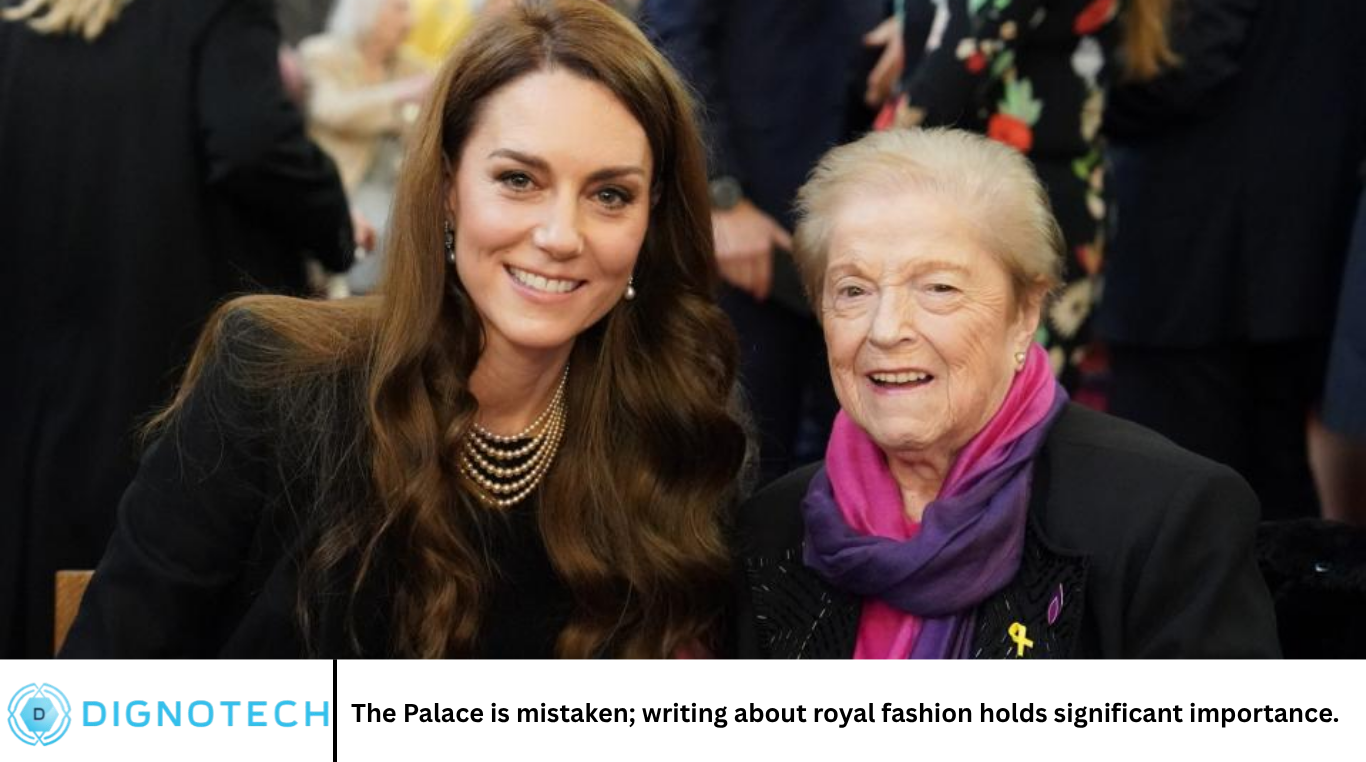The Palace is mistaken; writing about royal fashion holds significant importance.

Royal fashion has long captivated the public imagination, symbolizing more than just fabric and style—it is a language of power, tradition, culture, and societal values. Despite its global fascination and influence, some institutions like The Palace have, at times, dismissed the importance of writing about royal fashion, considering it trivial or superficial. This perspective is not only shortsighted but ignores the rich cultural and historical layers embedded within royal attire.
In this article, we explore why writing about royal fashion matters profoundly, why The Palace’s dismissal is mistaken, and how royal fashion plays a pivotal role in reflecting and shaping society. From its historical roots to modern-day implications, royal fashion remains a powerful medium of communication, symbolism, and identity.
More Read: Lisa Armstrong discovers top-quality knitwear – featuring cashmere starting at just £79.
The Historical Significance of Royal Fashion
Royal fashion is not merely about aesthetics—it is deeply rooted in history, tradition, and symbolism. Throughout centuries, monarchs have used clothing to project authority, legitimacy, and identity. The choice of fabrics, colors, and styles has often been carefully curated to communicate messages to both domestic subjects and foreign dignitaries.
For example, the color purple was historically reserved for royalty due to the rarity and cost of purple dye. Royal garments frequently incorporated symbols like crowns, fleur-de-lis, and other insignias to denote power and lineage. Writing about these fashions helps us understand how monarchs visually communicated their status and ideals in an era when literacy was limited and visual symbolism was paramount.
Moreover, royal fashion has often marked important historical moments—coronation robes, wedding dresses, and mourning attire all carry layers of meaning that offer insights into the political and cultural climate of their times.
Royal Fashion as a Reflection of Cultural Values
Royal fashion also mirrors the evolving values and norms of society. When Queen Victoria popularized white wedding dresses, it was more than a style choice—it reflected Victorian ideals of purity and domesticity. Similarly, Princess Diana’s daring fashion choices in the 1980s mirrored the growing visibility of individuality and modern femininity.
By writing about royal fashion, journalists and historians document how royals engage with societal change, sometimes reinforcing tradition, other times pushing boundaries. This helps the public appreciate the monarchy not as a static institution, but as a living entity interacting with contemporary culture.
The Role of Royal Fashion in Modern Media and Public Perception
In today’s world, royal fashion receives enormous media attention, often dominating headlines during key events like weddings, births, and anniversaries. Far from being frivolous, this focus on fashion plays a significant role in shaping public perception of the monarchy.
Outfits chosen by royal figures are scrutinized for what they communicate: respect for tradition, support for national designers, or a commitment to sustainability. For instance, Meghan Markle’s choice to wear a dress by British designer Clare Waight Keller for her wedding was seen as a statement of cultural diplomacy and modern royal identity.
Ignoring or dismissing the importance of writing about royal fashion overlooks how fashion acts as a subtle but powerful form of communication, helping the monarchy maintain relevance in a fast-changing world.
Economic and Diplomatic Impact of Royal Fashion
Royal fashion also has a tangible economic impact. Designers who dress royal family members often experience a surge in international recognition and sales—known as the “Kate Middleton effect” or “Meghan Markle effect.” This boosts local fashion industries and contributes to national pride.
Moreover, royal attire can be a diplomatic tool. Wearing fashion from allied countries or ethnic designers can signal respect and foster goodwill. Writing about royal fashion helps uncover these strategic uses of clothing, emphasizing that royal attire is not mere decoration but part of a broader political and cultural dialogue.
Why The Palace’s Dismissal of Royal Fashion Reporting Is a Mistake
Some royal institutions have viewed media coverage of royal fashion as intrusive or frivolous, sometimes seeking to downplay its importance. However, this perspective is misguided for several reasons:
Public Interest and Engagement: Fashion coverage generates significant public interest, which helps maintain engagement with the monarchy. Writing about fashion humanizes royals, making them relatable and accessible.
Cultural Documentation: Fashion is a form of cultural heritage. Documenting royal fashion preserves a record of changing aesthetics and social values for future generations.
Political and Social Messaging: Royal attire is often a form of soft diplomacy and political expression, deserving serious analysis and discussion.
By dismissing this coverage, The Palace risks alienating a crucial aspect of public discourse and overlooking a vital channel through which the monarchy communicates with the world.
Royal Fashion and Feminism
Royal fashion also intersects with debates about feminism and agency. Female royals, in particular, navigate complex expectations regarding appearance and behavior. Their fashion choices can both challenge and conform to traditional gender roles.
Writing about royal fashion provides a lens to explore these dynamics, examining how royal women balance personal expression with public duty. Coverage of their attire opens dialogue about evolving roles of women in high-profile positions and broader societal gender norms.
The Global Influence of Royal Fashion
Beyond the United Kingdom, royal fashion influences monarchies and societies worldwide. From the vibrant saris of Indian royalty to the intricate kimonos of Japanese emperors, royal attire reflects diverse cultural heritages.
By documenting and writing about these fashions, journalists contribute to global cultural understanding and appreciation. This reinforces the importance of royal fashion as a bridge between history, culture, and modern identity across nations.
Frequently Asked Question
Why is royal fashion considered important beyond just clothing?
Royal fashion communicates power, tradition, and cultural values. It serves as a visual language that reflects historical moments, political messages, and social change.
How does royal fashion influence public perception of the monarchy?
Fashion choices can make royals appear relatable, modern, or respectful of tradition, shaping how the public connects with and views the monarchy.
Can royal fashion impact the economy?
Yes. Designers worn by royals often see increased sales and global recognition, boosting local industries and national pride.
Is royal fashion used for diplomatic purposes?
Absolutely. Royals may wear designers from allied countries or culturally significant attire to send diplomatic signals and foster goodwill.
How does royal fashion intersect with feminism?
Female royals often navigate expectations through their fashion, balancing personal expression with public roles, providing insights into gender and power.
Why might The Palace dismiss coverage of royal fashion?
Some institutions see it as frivolous or intrusive. However, this overlooks its cultural, political, and social significance.
How does royal fashion vary across different monarchies worldwide?
Royal fashion reflects diverse cultural traditions, from Indian saris to Japanese kimonos, symbolizing unique histories and identities.
Conclusion
Writing about royal fashion is not a trivial pursuit. It is an essential part of understanding the monarchy’s evolving role in society, culture, and politics. The Palace’s dismissal of royal fashion as insignificant overlooks the depth of meaning, historical importance, and public engagement it generates.From its symbolic roots in history to its modern-day diplomatic and cultural power, royal fashion deserves serious attention. Journalists, historians, and cultural commentators play a crucial role in interpreting and preserving this fascinating form of communication.




